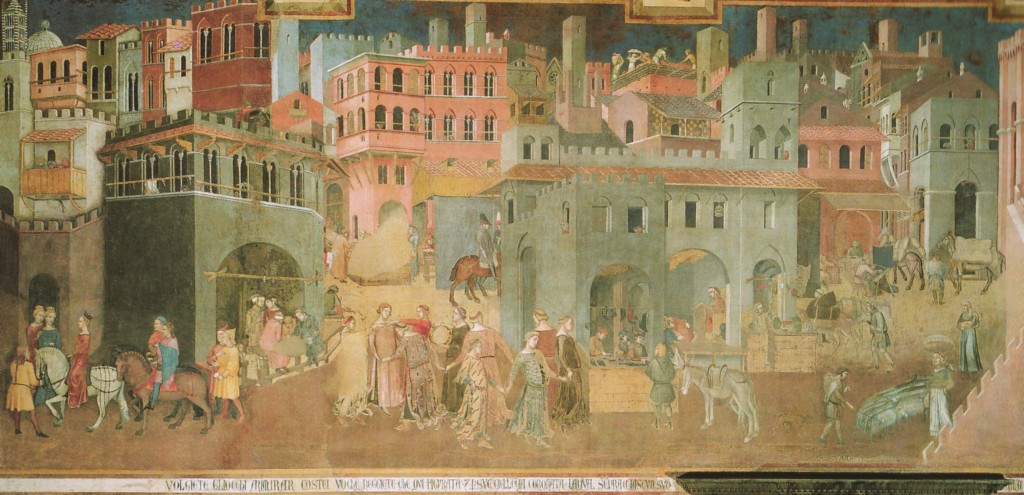Seminar on Tuesday, October 22, Studio 2, 4 pm. If in ancient European and Mediterranean cultures the domestic environment had been hidden and protected by blank walls with little or no architectural features addressing the space of circulation, in the Middle Ages the rise of a new ethos produced an urban condition marked by the flourishing of façade designs. The façade becomes then the embodiment of the right to private property, a representation of the status of the individual, and the exuberant, stylistically diverse expression of a society that flaunted and displayed productivity as the main raison d’etre of the city. It is in this context that housing ceases to be a private concern and becomes, on the contrary, the key ingredient of urban form; while still typologically undefined, the domestic architecture of the late medieval period becomes the object of an increasingly refined linguistic experimentation precisely at the level of its façade. Through the paradigmatic case of medieval Siena, the seminar will look at the way in which the design of elevations went from mere necessity to self-representation to locus of the invention of the discipline of architecture. The Sienese case will therefore offer a chance to investigate the political and economic roots of the shift which turned the intimacy of the house inside-out proposing for the first time in European history a complete fusion of public and private, production and reproduction, ritual and labour.
Suggested readings:
Frugoni, Chiara. A Distant City: Images of Urban Experience in the Medieval World. Trans. William McCuaig. Princeton: Princeton University Press, 1991.
Nevola, Fabrizio J. D. “’Per Ornato Della Città’: Siena’s Strada Romana and Fifteenth-Century Urban Renewal”. In The Art Bulletin 82, no. 1 (March 2000): 26-50.
Rubinstein, Nicolai. “Political Ideas in Sienese Art”. In Journal of the Warburg and Courtauld Institutes 21, no. 3-4 (Jul.-Dec. 1958): 201-202.
Skinner, Quentin. “Ambrogio Lorenzetti: The Artist as Political Philosopher”. In Proceedings of the British Academy LXII: 1-56.


No comments
Be the first one to leave a comment.